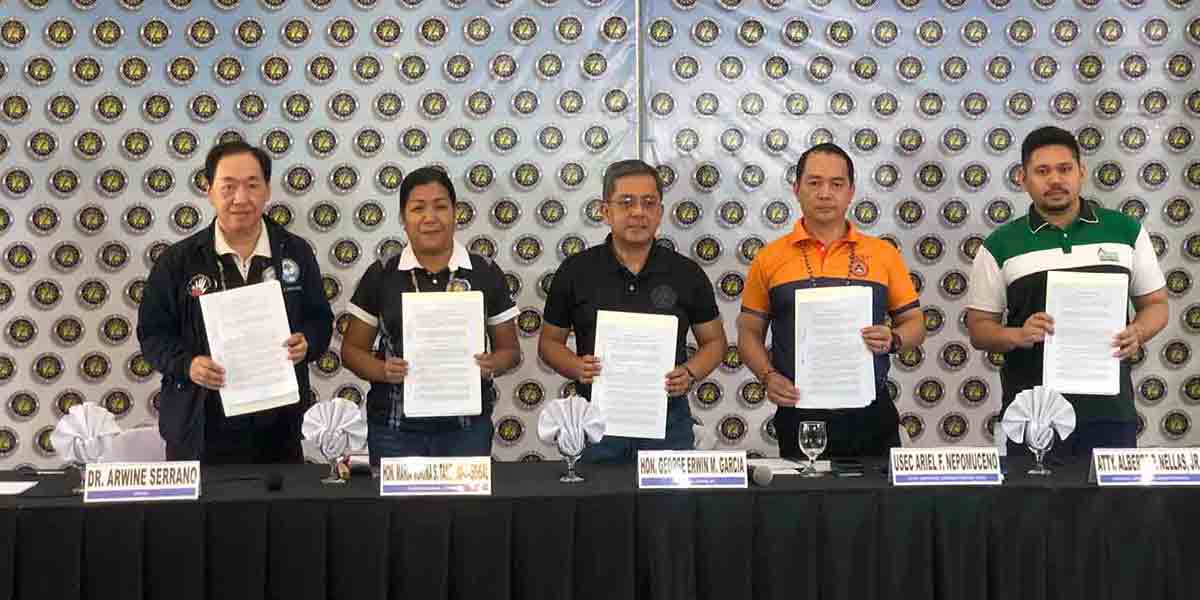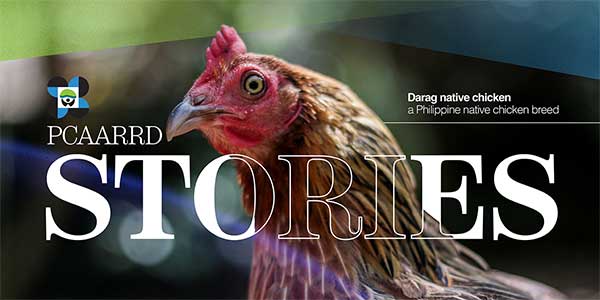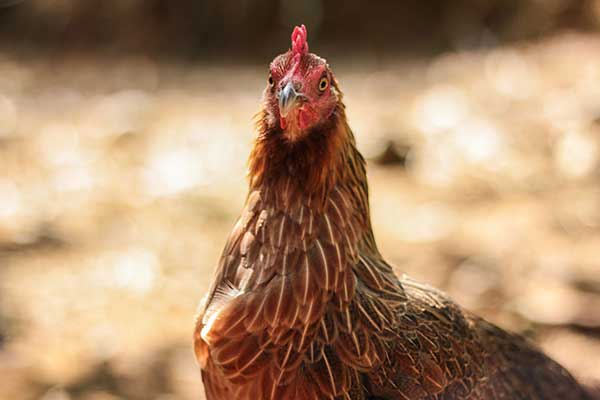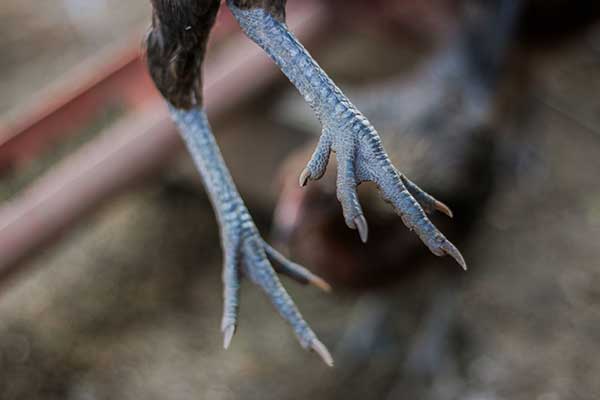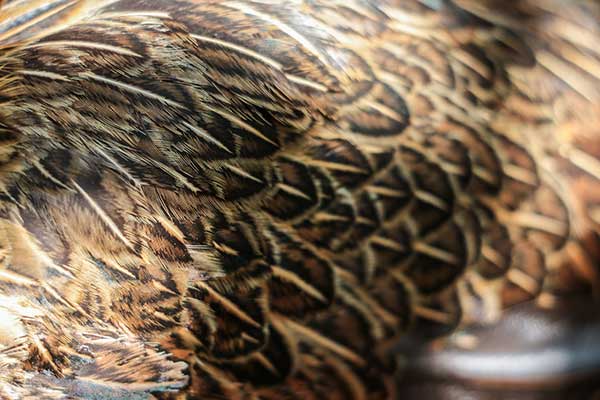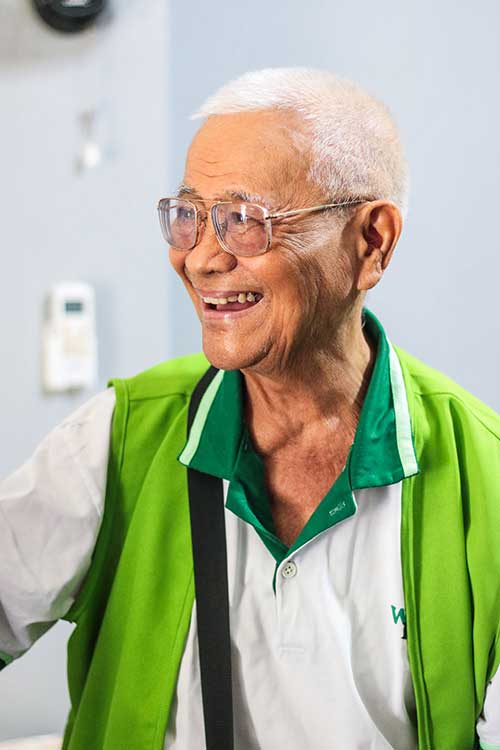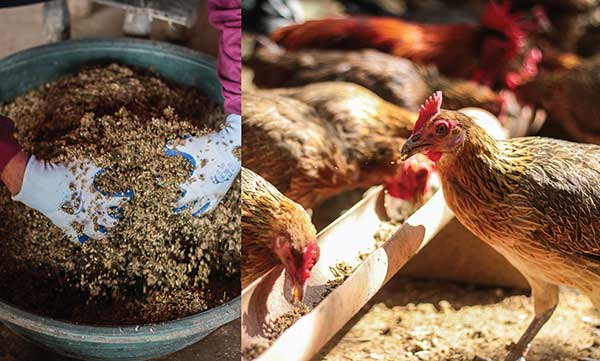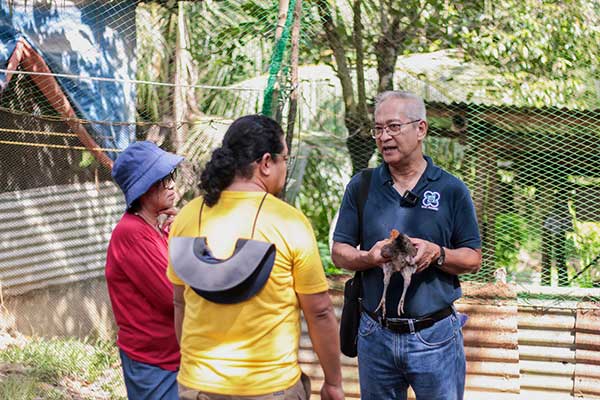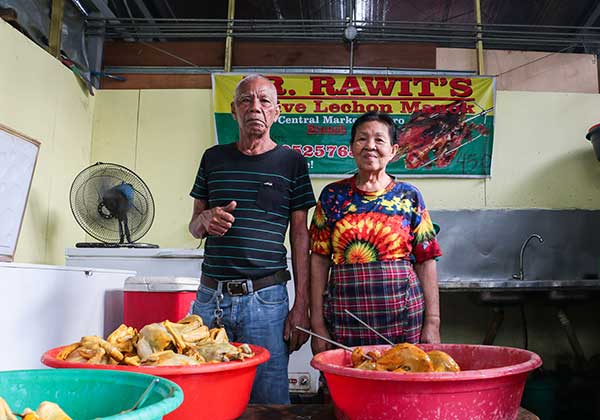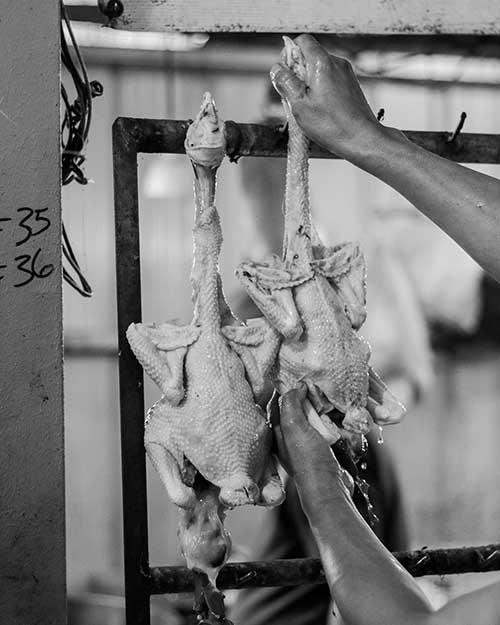By Karl Vincent S. Mendez
In the midst of Martial Law, a group of Filipino scientists and researchers were tasked to look for knowledge, ideas, and expertise outside the country to enhance the Philippine livestock industry. While travelling the farmlands of Tokyo, Dr. Bernabe Cocjin, saw the Hinai-dori; Japan’s native chicken. It was at that moment that the young researcher from Panay found an inspiration that would revolutionize the industry.
The Hinai-dori, a Japanese native chicken endemic to the Akita Prefecture, is renowned for its taste and quality meat. However, during the Meiji Era (1868–1913), the Hinai-dori breed came to a point where it was at risk of being extinct due to the introduction of exotic and foreign chicken breeds.
Guided by a strong cultural pride, the Japanese made an effort to conserve and protect the Hinai-dori and preserve its cultural and economic value. The Japanese implemented policies and provided institutional support to the industry. In fact, by 1942, the Hinai-dori was prescribed as a national treasure of Japan, making it a highly protected commodity.
To date, the Hinai-dori is a highly sought-after delicacy bringing much contribution to the Japanese economy.
In the 1970’s, the same conflict became evident for the local native chicken industry in the Philippines. Economic-wise, the industry has failed to penetrate a more significant market outside the realm of backyard farming. As the nation intensely focused on industrialization, the poultry industry invested more in highly profitable broiler breeds. Consequently, native chicken breeds across the country were neglected to become mongrels with unrefined and unpredictable performance and characteristics.
Dr. Cocjin realized that if the Philippines can emulate the success of Japan in breeding a native chicken of cultural significance, the country might be able to build a strong cultural pride that will help foster socio-economic growth. Being a native of Panay, Dr. Cocjin saw the answer in the farmlands of Iloilo—the Darag Native Chicken.
Never heard of Darag?
Darag is one of the many native chicken breeds of the Philippines. It is endemic to the islands of Panay and Guimaras and evolved from the Red Jungle Fowl (Gallus gallus bankiva), which has been roaming around Southeast Asia for thousands of years.
To the uninitiated, Darag might seem indistinguishable from other types of native chicken breeds. One must be on the lookout for certain characteristics to identify a genuine Darag.
Darag, meaning yellow in ‘Kinaray-a’ or Ilonggo, is most recognizable for its yellowish-brown plumage. The color of its feathers is a combination of dark brown and golden yellow with a distinguishable stroke of yellow line on the middle part, from base to tip of each feather.
Accompanying the golden coat of Darag are its gray shanks or chicken feet. While other breeds may have a similar yellowish plumage, a genuine Darag must have gray shanks. Interestingly, farmers and breeders intentionally choose to breed chickens with gray shanks because they directly associate gray shanks with tastier meat.
One cannot overestimate the satisfaction of eating Darag native chicken. Its savory meat and distinct eating experience are claimed to be better than commercial chicken meat. It also differs from the known taste and experience of eating other native chicken breeds. While Darag meat might be slightly tougher compared to commercial chicken meat, it compensates with the lack of the gamy taste that is often associated with native and wild meats.
It is not hard to imagine that all around Iloilo City, Darag has overtaken many businesses. In the wet market of the old town, signages with the phrase ‘Authentic Darag native chicken’ are placed in every direction. Prices of dressed Darag plays competitively well among commercial chickens. Dressed Darag chicken is priced at 350 pesos per kilo, which can be profitable to farmers and sellers.
Darag native chicken dishes have also become a go-to meal for locals and tourists alike. Dishes like ’tinuom,’ ’binakol,’ and ’inasal.’ are the common gateway food to taste the Darag. Many restaurants have been offering Darag dishes on a larger scale as the demand increases. Among the well-known establishments offering popular Darag chicken dishes is JR Rawit’s Native Lechon Manok, which has been in the Darag business for 35 years.
Developing the Darag
The development of Darag Native Chicken started with the initiative of Dr. Cocjin under his tenure at the West Visayas State University in the 1980s. Inspired by Japan’s Hinai-dori, Dr. Cocjin started the research on creating a purified line of Darag in the Philippines. But, just like the mountain ranges of Panay, the task was surely going to be an uphill climb. And the first challenge, of course, was where to start.
Panay has been home to a large population of native chickens. The problem was that these populations were mongrels that presented varying performance and unpredictable characteristics. This situation complicates establishing a genuine population of Darag since a chicken that may look like a Darag based on its physical characteristics may carry recessive genes from other breeds. This means that the next generation of chickens will not be uniform and will again have a diverse set of characteristics.
The solution was to purify the population of the Darag native chickens through targeted selection and breeding. With the combined efforts of researchers from WVSU led by Dr. Cocjin and institutional support from the Philippine Council for Agriculture, Aquatic and Natural Resources Research and Development of the Department of Science and Technology (DOST-PCAARRD), a successful selection and breeding program gave birth to a population of pure Darag native chickens.
The program entails collecting enough population of native chickens from different parts of Panay and Guimaras as the first generation for breeding. These chickens were chosen by their physical characteristics as defined by the research of Dr. Cocjin.
Through a meticulous selection and breeding process, the researchers developed a purified line of Darag chickens. With each generation being produced, chickens with non-Darag characteristics are taken away from the controlled population to avoid contaminating future generations with other genetic materials. Then, within eight generations of selection and breeding, a pure line of Darag with uniform and predictable characteristics was developed.
Dr. Synan Baguio, Director of the Livestock Research Division at DOST-PCAARRD and an advocate of the Philippine Native Livestock Industry, explains that once purified the Darag breed became a more viable livelihood for farmers.
“Noong ang Darag ay na-purify na natin, na-achieve na natin yung uniformity ng physical characteristics, predictability in production performance, and consistent product quality.” Dr. Baguio explained. With this, farmers are now able to grow Darag without facing the risk of profit loss due to inferior produce.
Investing on tradition
Investing in indigenous and grassroots technology may raise some eyebrows, especially in an era where Science is often related to modernity, big industries, advanced technologies, and bigger profit. It is easy to understand that people fear the risk of the unfamiliar.
However, DOST-PCAARRD saw an opportunity for the native chicken industry. Dr. Baguio explains that the blossoming Darag industry in Panay is an example of reinforcing culture and pride through science as a platform for greater socio-economic development.
“DOST-PCAAARD is supporting the development of Darag native chickens because ethnic delicacy in an area is part of the culture, which when developed properly can be considered one of the cultural prides. And in addition to that, there’s also the opportunity to create a stable livelihood for the farmers and for the processors who would be producing the ethnic delicacies,” said Dr. Baguio.
Indeed, the S&T intervention of dedicated researchers has paved the way for a sustainable Darag industry.
Moving forward, Dr. Baguio promised that the development of Darag would continue. “Ang ating mga breeding and selection activity ay magpapatuloy dahil gusto pa natin na mas pataasin ang produksyon at kalidad ng Darag na isang Philippine Native Chicken.”
He also urged more scientists and researchers to help develop the Darag breed. Currently, DOST-PCAARRD is looking to fund initiatives that will continue to develop the production and sustainability of Darag.
Technology to people
Now that science has guaranteed the authenticity of Darag, the next step is to make sure that it is available to any consumer who wants to get a taste of it. Farmers and growers are the foundation of the industry. Therefore, empowering them is the key to creating a sustainable Darag native chicken economy.
With the developed breeding program of WVSU and supported by DOST-PCAARRD, various trainings and seminars were conducted to capacitate local farmers. These trainings aim to impart the significance of conserving the genetic potential of Darag.
One major leap in the promotion of the Darag native chicken was the creation of the Panay Darag Breeders Association (PADABA) in 2017. The group, consisting of over 100 local farmers, business owners, and former OFWs, aims to make the Darag a strong commodity and provide sustainable livelihood opportunities for farmers.
Agnes Filipinas Moreno, known as ‘Ness’ by her peers, is among the Ilonggo farmers who adopted the breeding program for raising Darag. She is also a PADABA member. Together with her husband, a former OFW, they created a thriving business of breeding and selling Darag.
Sharing her farming expertise, Aling Ness says that the production cost for Darag has been relatively cheaper than other breeds. Feed cost, for example, has been cut down to a minimum due to non-reliance on commercial feeds. Being a native breed, Darag native chickens have developed a healthy gut and can consume a variety of forages, giving them a relative advantage compared to other breeds of chickens that rely on commercial feeds alone.
“Talagang maganda!” Aling Ness expressed about the business of Darag. “Puwede mong mai-recommend sa iba. Lalo na sa mga retirees. Kasi kung mahalin mo lang [ang Darag] ay bibigyan ka din nila ng magandang [kabuhayan].” (DOST-PCAARRD S&T Media Services)


